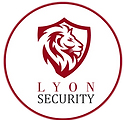Essential Steps for an Effective Security Threat Risk Assessment
- Lyon Security

- Aug 31
- 3 min read
Updated: Nov 8
A security company performs a detailed risk assessment to understand a business's specific security needs and justify their service recommendations. This comprehensive evaluation goes far beyond a simple checklist. It analyzes all potential threats, vulnerabilities, and the potential impact of a security incident.

Understanding the Importance of Risk Assessment
A thorough risk assessment is crucial for any business. It helps identify weaknesses and prepares the organization for potential threats. By understanding these risks, businesses can implement effective security measures. This proactive approach not only protects assets but also ensures operational continuity.
The Assessment Process
The assessment typically involves five key phases:
Phase 1: Preparation and Asset Identification
The security company first collaborates with the business to set clear objectives, scope, and parameters for the assessment.
Define Scope and Objectives: The company determines the areas to be assessed. This could be the entire organization, a single location, or specific high-value departments. Objectives may include enhancing safety, ensuring regulatory compliance, or protecting against specific threats.
Identify and Value Assets: The security team creates a comprehensive inventory of the business's assets. This includes:
- Physical Assets: Buildings, offices, equipment, inventory, and other property.
- Intangible Assets: Intellectual property, trade secrets, client data, and brand reputation.
- Human Assets: Employees, executives, and clients.
Determine Asset Criticality: The company classifies each asset based on its value and importance to business operations. Losing a critical asset, like a security officer or a customer of the business, would have a far higher impact than losing a non-critical one like a glass door or a copy machine.
Phase 2: Threat and Vulnerability Analysis
With a complete asset list, the security company identifies what could cause harm and how a threat could exploit weaknesses.
Threat Identification: The security team identifies both internal and external threats that could harm the business. This includes:
- External Threats: Terrorists, rioters, thieves, burglars, vandals, competitors, and natural disasters.
- Internal Threats: Disgruntled or negligent employees, former staff, or contractors, fire, bomb, gas leak.
Vulnerability Analysis: The team looks for weaknesses in the business's current defenses that a threat could exploit. A vulnerability assessment typically involves:
- Physical Security Assessment: A site walk-through to inspect entry points, lighting, access controls, and surveillance systems.
- Procedural Review: Examining existing policies, such as visitor logs, key controls, and emergency plans.
Phase 3: Risk Evaluation and Scoring
This phase combines the threat and vulnerability analysis to calculate a risk score for each potential scenario.
Analyze Likelihood: Based on collected data, the company estimates how likely a specific threat is to occur. Factors considered include location crime rates, industry threats, and historical incident data.
Determine Impact: The company evaluates the potential financial, operational, and reputational damage if a threat successfully exploits a vulnerability. This is often framed in terms of business disruption or monetary loss.
Calculate Risk Rating: The company uses a risk matrix to assign a numerical or categorical rating (e.g., high, medium, low) for each risk by combining its likelihood and impact.
Prioritize Risks: Findings are ranked by their risk level, ensuring that the highest-priority concerns are addressed first.
Phase 4: Developing a Security Plan
The company uses the prioritized list of risks to develop and recommend a customized security plan.
Mitigation Strategy: The plan outlines security controls and measures designed to reduce the identified risks. This can include a layered approach that prioritizes the most effective measures:
- Elimination: Removing a risk entirely.
- Engineering Controls: Installing new technology like advanced analytical cameras, on & off-site CCTV monitoring, or access control systems.
- Administrative Controls: Updating security policies, procedures, and employee training.
- Protective Equipment: Providing safety equipment where necessary.
Cost-Benefit Analysis: The security company helps the business understand the return on investment for their security spending. They show how the recommended controls reduce the potential financial impact of a security incident.
Phase 5: Documentation and Review
The final stage involves creating a formal report and establishing a plan for ongoing monitoring.

Produce a Risk Assessment Report: This document summarizes the findings, including the identified assets, threats, vulnerabilities, and prioritized risk levels. It provides a clear, actionable roadmap for the business to follow.
Continuous Monitoring: Security threats are constantly evolving. The security company will recommend regular follow-up assessments to ensure the plan remains effective and adapts to new threats, business changes, or new technologies.
The Impact of Advanced Security Solutions
Implementing advanced security solutions can significantly enhance a business's safety. These solutions not only protect physical assets but also safeguard sensitive information. By investing in technology, businesses can stay ahead of potential threats.
At Lyon Security, we offer a cost-free, comprehensive risk assessment service for residential estates, commercial, industrial, and retail industries in the Cape Town area.
Contact our office: 021 300 6895
Email: mark@lyonsecurity.co.za
Website: www.lyonsecurity.co.za





Reading about risk assessments reminded me how accuracy and clarity matter just as much in research. In global healthcare studies, even a small translation error can change the meaning of critical data. That’s why researchers often rely on a Medical Journal Translation Service to ensure their findings are interpreted correctly across languages. Clear communication is key, whether it’s in security or science.
Awesome that you guys offer this service for free